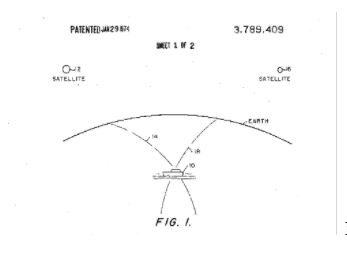If you’re an independent inventor looking to gain legal protection over your invention the concept of a Patent process may seem daunting, but this article will explain the legalities of a Patent and the processes required in detail to help you protect your invention. You may now be wondering if your invention is even able to be patented; the positive news is anything can be patented as long as it is deemed to be of use. Examples of this are a process, machinery, chemical compound. This can range from a technical device such as a new type of car or a super-duper secret family recipe used in commerce that you want to protect from infringement.
However, there are a number of things you cannot patent, and therefore research is required in order to make sure your patent application is not a waste of time. Under U.S law, you cannot patent a novel, non-obvious or non-useful invention; for example, anything that is already common knowledge, such as a basic vacuum cleaner or a locomotive engine. In addition, the invention must never have been available at public disclosure for more than a year before the patent is applied for or, again, the patent will be rejected.
In addition to this, your application must be able to present some use to society and the inventor/s must be able to demonstrate this competently in the application form to the USPTO.
Some examples of successfully patented ideas are:
- U.S. Patent No. 1,867,377 (Sliced Bread)
- U.S Patent No. 3,470,828 (Maglev)
- U.S Patent No. 3,053,480 (Quadcopter drone)
- U.S Patent No, 3,789,409 (GPS)
- U.S Patent No. 3,728,480 (Video game console)
- U.S Patent No. 2,026,082 (Monopoly board game)
- U.S Patent No. 4,378,116 (Rubik’s cube)
- U.S Patent No. 3,005,282 (Lego bricks)
- U.S Patent No, 2,415,012 (Slinky toy)
fig 4- U.S Patent Lego brick
h
Fig 1- U.S Patent GPS
r
These cases are thoroughly useful and are recommended to be researched and read through to familiarise yourself with the process. Even if you hire an attorney to aid you in the application, a strong understanding of the process will favour you greatly in understanding the attorney’s approach in handling complex legal details the USPTO is not equipped to handle.
Should I hire a Patent attorney?
The simple answer is yes. Patent attorneys have acquired all the necessary and complex legal training to handle your Patent process in the most effective way. A patent application comes partnered with timely and difficult legalities such as communication with USPTO examiners or potential rejections from the USPTO; therefore, an attorney is highly recommended to allow the process to be smooth and time-efficient.
The patent process itself:
The Patent process is long and complex, taking around 23 months to complete with regular status checks needed from you, the inventor, to be aware of any upcoming filing issues (for example fees) to be dealt with.
1) The first step to consider is whether your invention is patentable. The guidelines above have addressed this in more detail, however the main factors in the decision to patent are whether it is a new original invention and whether it will provide a use to society.
2) If you have reviewed this stage and conclude that you are eligible and a patent is required you must make a decision regarding the type of patent you require. The three categories outlined by the USPTO are Utility, Design and Plant. A Utility patent is one of the most commonly sought patents that the USPTO deals with as it includes any new manufacturing process or chemical composition; examples of these being a new medication or form of machinery such as a new lawnmower or car brakes. The second type of patent is Design, this is described by the USPTO as any ‘new, original, and ornamental Design for an article of manufacture.’ For example, the ‘iPhone’. Finally, a Plant patent is as simple as it sounds. It is for anyone who invents or discovers and consequently asexually produces any form of new plant.
3) The next, and arguably one of the most critical stages, is to calculate the fees your patent application will be acquiring. Basic fees for an application are required and determine which type of patent one is applying for. Utility patents tend to be more costly due to the amount of hours they require to draft, approximately 40-50 hours per invention. Therefore, the cost, according to the USPTO cost calculation chart, updated and relevant in 2020, is 300 dollars. In comparison, a Design or Plant application’s basic fees are only 200 dollars as these take significantly less hours to draft. On top of this basic fee, most applications will incur additional fees for search and examination of the invention the inventor is proposing and issue of the patent filing at the end of the process. For a more comprehensive list of prices click here.
4) The next step, when all those prior steps have been completed to a good standard, is to submit the application electronically to the USPTO. On the form must be: the application number and filing date, the application fees clearly presented and organised showing both the basic and additional fees and the payment of them with evidence of this attatched to the form. Finally, there must be a required filing of fees displayed.
5) After the application is submitted it must be monitored, to do this one must work with the examiner reviewing your application. The content must be reviewed to confirm it meets the requirements of 25 U.S.C 111a:
A) The application must be written to the director by the inventor or joint inventors. (It is important to note here that an economic contributor to the invention does not legally count as an inventor).
B) It must include a specification, a drawing (where necessary) and an oath stating they are the inventor or the application was completed by someone else but was authorised by the inventor.
C) Finally, the necessary fees, basic and additional, if applicable have been fully paid.
If you have an attorney the communication will be between them and the examiner.
6) After the application has been submitted and monitored the next step is either receiving rejection or approval from the USPTO. If your application is successful you will receive a ‘Notice of Allowance’. This will include the issue and publication fees that need to be paid. Failure to provide payments in this stage, and all prior stages, means the application will be abandoned. Utility patents and the re-issue of patents usually take 4 weeks to be issued, and it is mailed to the grant holder on the day of issue.
7) The final step once the Patent has been filed is to maintain it. This is a job that is you have to do that can be completed effectively by your attorney. The USPTO will not follow up on maintenance payments or police your patent for infringement threats, for example. This is where an attorney would be of incredible use as they have the legal expertise to deal with the issue with the maximum time efficiency and ability. The patent will typically be protected federally for 20 years, however, the payments to maintain it will be in force 4, 8 and 12 years post issue. A failure to keep up to date with the payments will incur the expiration of the patent, and the invention will no longer be protected, meaning other companies will legally be permitted to use your invention or take the idea as their own. This highlights the importance of an attorney lawyer to handle these critical post-acquired issues.
In conclusion, the patent process is long and can be complex. However, there is no need to tackle your patent application on your own. Partners Law Group is a very qualified team of IP lawyers with over 10 years experience effectively working on IP issues, specifically trademark and patent applications who will help you with your trademark and patent queries.
Cover photo from You X Ventures found on Unsplash.
